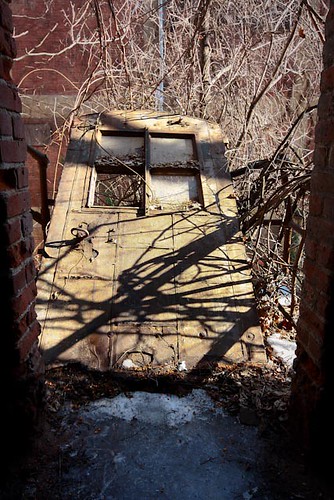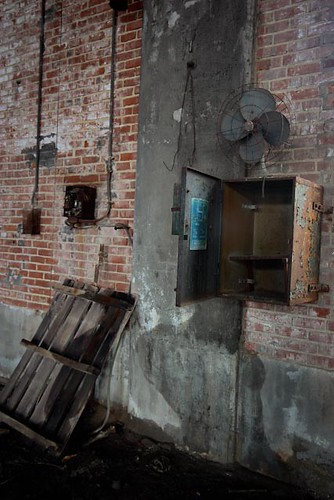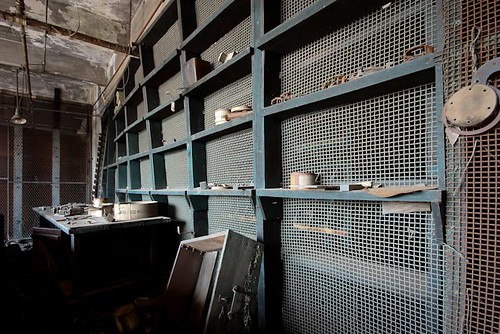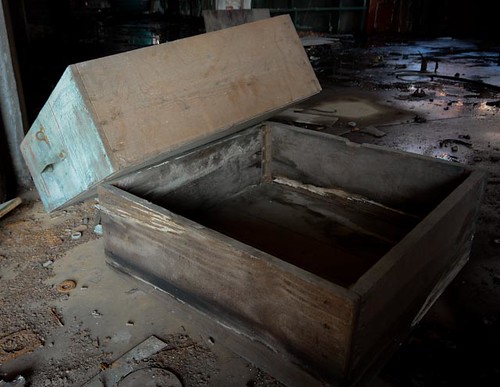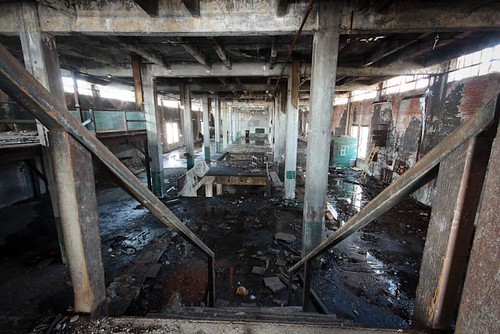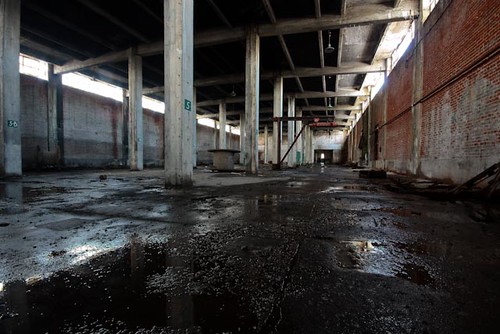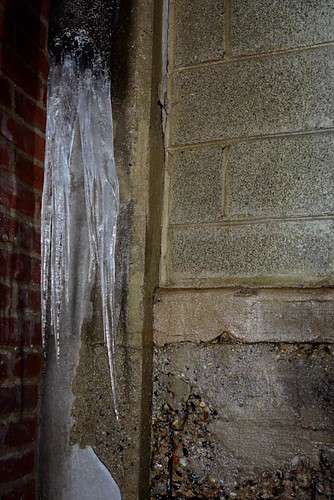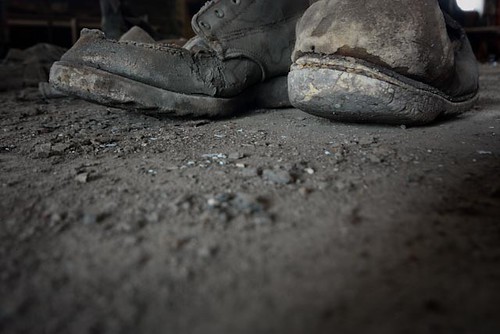Mid Steel Wasteland
14 years 8 months ago #1
by krush
Mid Steel Wasteland was created by krush
Mid Steel was a succession of steel-making corporations whose flagship plant was the Mid Steel Works which operated from 1867 until 1976. The company was most notable for producing high-quality steels (including many alloy steels) and for providing the casting, forging, and machining needed to use them in special applications such as heavy artillery (naval, coastal, and field); steam turbines; naval armor plate; and pressure vessels for use in chemical plants (for example, petroleum refineries). Mid also helped pioneer the steel formulas used in the early automotive industry. Mid was never a particularly large company (relative to giants such as Carnegie, Bethlehem, and U.S. Steel), and the flagship plant was, in the management's own words, "never a 'tonnage' plant". That is, unlike larger steelmakers, they did not measure their success in terms of the sheer tonnage they could manage to produce per year. Mid's niche in the steel industry was defined early on by a scientific approach to metallurgy during the transitional era when steelmaking gradually transformed from black art to applied science. Even after the rest of the industry caught up in terms of that transition, Mid continued for decades to maintain a niche for itself in the area of the market defined by high quality, research and development, and special applications.
The company began in 1867. The products planned to produce were cast-steel locomotive tires and cast-steel forgings, with a plan to make eventually a promising new product—steel rails, which would be far superior to older iron ones. (At about this time in nearby Bethlehem, the predecessor company of Bethlehem Steel was also getting into the steel rail business.) The site was chosen because plenty of the anthracite coal that moved by river, canal, and rail from northeast Pennsylvania passed by the town on its way to Port Richmond. Anthracite was superior for steelmaking to bituminous coal. The town's proximity to one of the principal locomotive-building plants of the western hemisphere, was another benefit of the site.
Mid began with the crucible process, but 2 years after its founding began using the open-hearth process, which would in time replace the crucibles. The company's early years were rocky. Eventually, a principal investor, the quietly-but-immensely influential American engineer and businessman, whose adherence to the idea of steelmaking as an obscure art of secret recipes did not serve him well when his recipes did not turn out right and he was unable to analyze why. Mid was roughly equidistant from the Schuylkill and Delaware rivers; however, if accurate, this etymology was fanciful, because a look at a map shows that the plant was actually much closer to the Schuylkill. Perhaps the emphasis was that it was not directly on either river (as might usually be expected of a steelworks), but between them. In 1872, a Yale-trained chemist with a talent for organization, who used applied science to straighten out the steelmaking formulas and processes, along the way analyzing and salvaging the scrap that had accumulated during their tenure.
By the Centennial Exposition in 1876, they "were making Mid into a company as congenial to a scientific approach to industrial problems as could be found anywhere in America".
Besides the railroad industry, one of the most important client industries for became armament. During the late 19th and early 20th centuries, among many American steel companies, Bethlehem Steel and Mid Steel especially became the Krupps of the Americas. (In fact, they built their armament businesses largely on offering the U.S. War Department domestic alternatives to buying from Krupp.)
It closed in 1976 and was demolished in 1980.
This is the last building standing.
1.
2.
3.
4.
5.
6.
7.
8.
9.
10.
11.
12.
13.
14.
15.
16.
17.
18.
19.
20.
The company began in 1867. The products planned to produce were cast-steel locomotive tires and cast-steel forgings, with a plan to make eventually a promising new product—steel rails, which would be far superior to older iron ones. (At about this time in nearby Bethlehem, the predecessor company of Bethlehem Steel was also getting into the steel rail business.) The site was chosen because plenty of the anthracite coal that moved by river, canal, and rail from northeast Pennsylvania passed by the town on its way to Port Richmond. Anthracite was superior for steelmaking to bituminous coal. The town's proximity to one of the principal locomotive-building plants of the western hemisphere, was another benefit of the site.
Mid began with the crucible process, but 2 years after its founding began using the open-hearth process, which would in time replace the crucibles. The company's early years were rocky. Eventually, a principal investor, the quietly-but-immensely influential American engineer and businessman, whose adherence to the idea of steelmaking as an obscure art of secret recipes did not serve him well when his recipes did not turn out right and he was unable to analyze why. Mid was roughly equidistant from the Schuylkill and Delaware rivers; however, if accurate, this etymology was fanciful, because a look at a map shows that the plant was actually much closer to the Schuylkill. Perhaps the emphasis was that it was not directly on either river (as might usually be expected of a steelworks), but between them. In 1872, a Yale-trained chemist with a talent for organization, who used applied science to straighten out the steelmaking formulas and processes, along the way analyzing and salvaging the scrap that had accumulated during their tenure.
By the Centennial Exposition in 1876, they "were making Mid into a company as congenial to a scientific approach to industrial problems as could be found anywhere in America".
Besides the railroad industry, one of the most important client industries for became armament. During the late 19th and early 20th centuries, among many American steel companies, Bethlehem Steel and Mid Steel especially became the Krupps of the Americas. (In fact, they built their armament businesses largely on offering the U.S. War Department domestic alternatives to buying from Krupp.)
It closed in 1976 and was demolished in 1980.
This is the last building standing.
1.
2.
3.
4.
5.
6.
7.
8.
9.
10.
11.
12.
13.
14.
15.
16.
17.
18.
19.
20.
Please Log in or Create an account to join the conversation.
